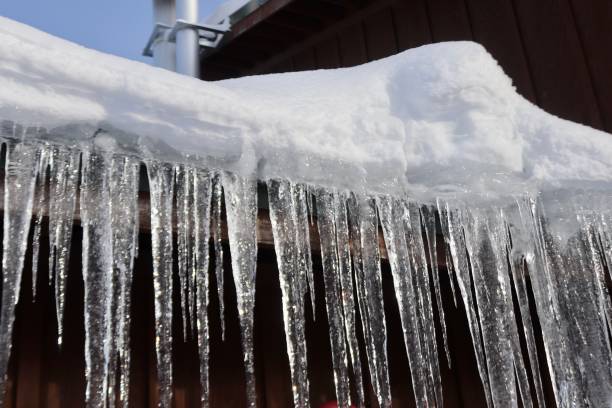Critical Strategies for Preventing Frozen Plumbing in Cold Weather
Critical Strategies for Preventing Frozen Plumbing in Cold Weather
Blog Article
Here further down you'll find a lot of superb additional info related to Winter Plumbing Precautions: Preventing Frozen Pipes.

Winter can wreak havoc on your pipes, especially by freezing pipelines. Below's exactly how to prevent it from happening and what to do if it does.
Intro
As temperature levels decline, the danger of icy pipes rises, possibly resulting in expensive repairs and water damage. Understanding how to prevent frozen pipelines is crucial for property owners in cold environments.
Avoidance Tips
Protecting susceptible pipes
Cover pipelines in insulation sleeves or use warmth tape to secure them from freezing temperatures. Concentrate on pipes in unheated or exterior locations of the home.
Heating strategies
Keep indoor spaces adequately heated up, specifically areas with pipes. Open up cupboard doors to allow warm air to flow around pipes under sinks.
Just how to identify frozen pipes
Seek decreased water flow from faucets, uncommon smells or sounds from pipelines, and noticeable frost on exposed pipes.
Long-Term Solutions
Structural modifications
Consider rerouting pipes far from outside walls or unheated areas. Add extra insulation to attic rooms, cellars, and crawl spaces.
Upgrading insulation
Purchase top quality insulation for pipelines, attic rooms, and walls. Correct insulation helps preserve regular temperatures and decreases the danger of frozen pipelines.
Shielding Exterior Plumbing
Yard pipes and outside faucets
Separate and drain yard hose pipes before winter months. Install frost-proof faucets or cover outdoor taps with protected caps.
Understanding Frozen Pipelines
What causes pipes to ice up?
Pipes freeze when subjected to temperature levels below 32 ° F (0 ° C) for prolonged periods. As water inside the pipelines ices up, it broadens, taxing the pipeline walls and possibly causing them to burst.
Risks and problems
Frozen pipes can bring about water supply disruptions, building damages, and expensive repair work. Burst pipes can flooding homes and create comprehensive architectural damage.
Indications of Frozen Pipeline
Identifying frozen pipelines early can avoid them from bursting.
What to Do If Your Pipelines Freeze
Immediate activities to take
If you think icy pipes, keep taps open to relieve stress as the ice melts. Make use of a hairdryer or towels soaked in warm water to thaw pipelines slowly.
Verdict
Stopping icy pipes calls for aggressive actions and fast reactions. By understanding the reasons, indicators, and preventive measures, house owners can shield their plumbing throughout cold weather.
5 Ways to Prevent Frozen Pipes
Drain Outdoor Faucets and Disconnect Hoses
First, close the shut-off valve that controls the flow of water in the pipe to your outdoor faucet. Then, head outside to disconnect and drain your hose and open the outdoor faucet to allow the water to completely drain out of the line. Turn off the faucet when done. Finally, head back to the shut-off valve and drain the remaining water inside the pipe into a bucket or container. Additionally, if you have a home irrigation system, you should consider hiring an expert to clear the system of water each year.
Insulate Pipes
One of the best and most cost-effective methods for preventing frozen water pipes is to wrap your pipes with insulation. This is especially important for areas in your home that aren’t exposed to heat, such as an attic. We suggest using foam sleeves, which can typically be found at your local hardware store.
Keep Heat Running at 65
Your pipes are located inside your walls, and the temperature there is much colder than the rest of the house. To prevent your pipes from freezing, The Insurance Information Institute suggests that you keep your home heated to at least 65 degrees, even when traveling. You may want to invest in smart devices that can keep an eye on the temperature in your home while you’re away.
Leave Water Dripping
Moving water — even a small trickle — can prevent ice from forming inside your pipes. When freezing temps are imminent, start a drip of water from all faucets that serve exposed pipes. Leaving a few faucets running will also help relieve pressure inside the pipes and help prevent a rupture if the water inside freezes.
Open Cupboard Doors
Warm your kitchen and bathroom pipes by opening cupboards and vanities. You should also leave your interior doors ajar to help warm air circulate evenly throughout your home.

Do you like more info about How to Prevent Your Pipes From Freezing? Place feedback directly below. We would be pleased to see your opinion about this article. We are looking forward that you visit us again soon. Do you know about someone else who is very much interested in the topic? Please feel free to share it. I recognize the value of reading our article about Prevent Frozen Pipes .
Book 24/7 Report this page